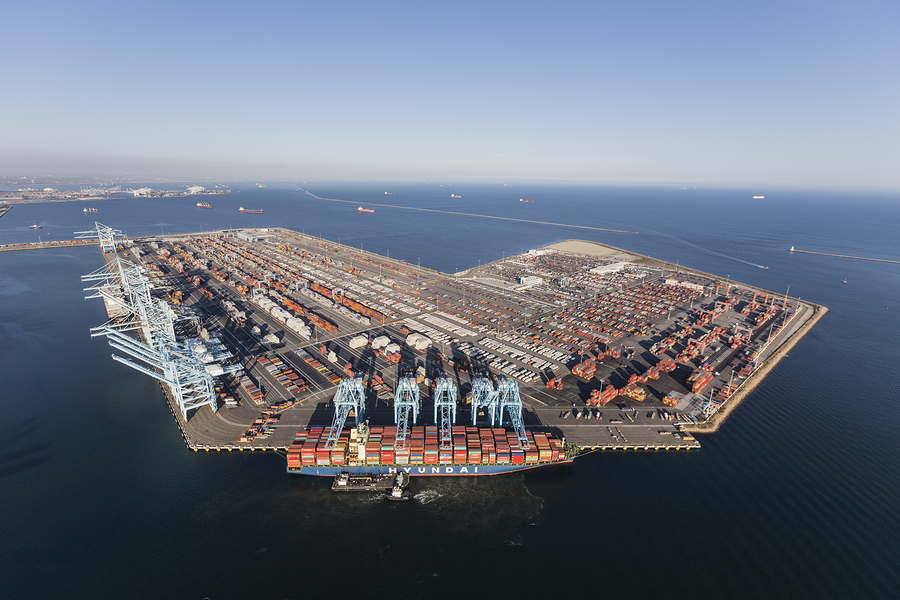The TradeLens blockchain initiative continues to attract new users around the globe while also having now gained a regulatory fillip from the US FMC, writes Brian Dixon
Ever since they were first used to facilitate the Bitcoin cryptocurrency in 2009, blockchains have continued to win favour across a host of sectors thanks to their ability to provide an essentially unalterable digital paper trail for a broad range of transactions and activities. Given the complexity of container shipping, it is perhaps not surprising then that this particular field has provided fertile ground for the ongoing development and adoption of this particular technology.
“Blockchain is a key component in an overall solution providing an immutable trust where permissioned participants in the supply chain can share sensitive data across geographical and organisational boundaries in a structured manner, increasing real-time access and visibility in a more efficient, effective and secure manner without compromising details, privacy or confidentiality,” says Michael White, CEO of Maersk GTD and head of TradeLens, the blockchain platform jointly developed by Maersk and IBM.
“By taking advantage of today’s technology, we have a huge opportunity to digitalise end-to-end processes and embrace a new business model, where data can be shared more efficiently, more effectively and more securely amongst permissioned participants involved in the end-to-end shipment cycle,” he continues. “One thing we have learned over the past two years is that our industry is ready for change. Companies and the people that lead them have seen the problems and know there is a better way – and they’re willing to embrace solutions which can help transform their business and our industry.”
Growth
Indeed, the past few weeks have seen Vietnam’s Cai Mep International Terminal (CMIT), the Port of Salalah in Oman and Canada’s Global Container Terminals all signing up to the TradeLens network, bringing the total number of ports and terminals integrated into the platform to 95. “For the benefits of any platform to be realised, the ecosystem of participants needs to keep growing and interacting,” Maersk GTD says, reporting that last year on average a different port or terminal joined the blockchain every five days.

Meanwhile, 2019 also saw 16 Customs Authorities engaging with TradeLens either through pilots or signed agreements. Additionally, seven other entities, it notes, “are sending customs release information for their respective countries, providing release information across 24 terminals” in Korea, the UK, the US and elsewhere.
Moreover, this past December, the US Federal Maritime Commission (FMC) published ‘The TradeLens Agreement’. Set to come into effect on February 6, this provides an exemption to the country’s Shipping Act that otherwise restricts cooperation between shipping companies. Given that MSC, CMA-CGM, Hapag-Lloyd and ONE are all TradeLens users in addition to Maersk itself, this ruling is of clear importance as, in the FMC’s words, it authorises these five shipping lines “to cooperate with respect to the provision of data to a blockchain-enabled, global trade digitised solution”.
“The TradeLens collaboration team of IBM and Maersk GTD are passionate about connecting the global supply chain through blockchain-enabled digitisation and believe that the platform will have a tremendously positive effect on the industry and on shipping lines’ ability to provide transparency and value to their customers,” Maersk GTD says. “The parties to this agreement understandably wish to communicate with each other to explore and address any possible consequences – intended or unintended – of sharing data with the TradeLens platform. This FMC filing is intended to ensure that such communications remain compliant with Shipping Act requirements.”
But it’s not just regulatory green lights that blockchains such as TradeLens need if they are to attain their full potential. “There are many stakeholders in today’s global supply chains: banks, shippers, consignees, ports and terminals, carriers, truckers, etc,” the company states. “Connecting such diverse ecosystems takes time and effort and common standards are required to enable automation and communication across such a diverse set of organisations.”
“As standards are agreed,” it continues, “TradeLens is taking an active role here, and by taking advantage of technology, there is a huge opportunity to address latent inefficiencies by digitalising processes, improving workflows and embracing new business models, where data can be shared more efficiently, more effectively and more securely amongst permissioned participants.”
Furthermore, while blockchain technology “opens the door to cross-organisational process efficiencies in ways we haven’t seen before”, the company believes it is “unrealistic to expect any one platform to solve everyone’s problems”. Therefore, it says, “interoperability will be key”. As such, the TradeLens team will continue to work with such organisations and industry groups as the United Nations Centre for Trade Facilitation and Electronic Business (UN/CEFACT) and the Digital Container Shipping Association (DCSA) among others “to establish and adopt common, workable, data standards to help facilitate the adoption of standards across the many and diverse participants in the global supply chain”.
Looking to the future, Maersk expects the “digital landscape for the container logistics sector” to continue evolving, going “from initially providing more granular and timely visibility to dramatically changing the way we work and interact with each other, including digitising the end-to-end processes of global trade”. However, to achieve this, data quality (DQ) remains critical. “[Artificial intelligence] and machine learning are great new technologies but if the base data is flawed, the guidance derived will be of lesser value,” it says. “Everyone involved in global supply chains has a responsibility and vested interest in improving DQ.”































